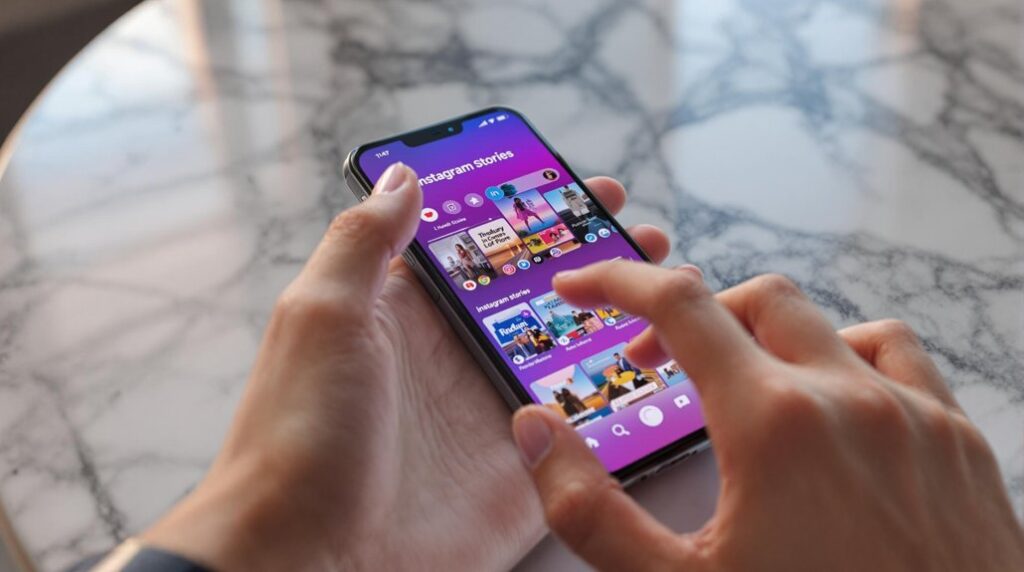Post engagement on Facebook is a measure of how users interact with content through likes, comments, and shares. These interactions are key metrics for understanding audience interest and the effectiveness of content. Engagement rates are calculated by dividing the sum of likes, comments, and shares by the total number of followers, then multiplying by 100. Rates over 1% are generally positive, with over 6% being exceptional, enhancing content visibility via Facebook’s algorithm. Effective engagement signifies strong audience-brand connections, essential for strategic content planning. Exploring this further reveals insights into maximizing your Facebook content engagement.
Key Takeaways
- Post engagement on Facebook includes interactions like likes, comments, and shares.
- Engagement indicates user interest and how well content resonates with the audience.
- High engagement rates improve content visibility via Facebook’s EdgeRank algorithm.
- Engagement rates over 6% are considered exceptional and reflect strong audience connection.
- Analyzing engagement metrics helps refine strategies for better audience targeting.
Defining Post Engagement
Frequently, businesses and marketers are tasked with understanding the intricacies of post engagement on Facebook to maximize their content’s impact. Post engagement encompasses the interactions users have with a post, such as likes, comments, and shares. These interactions are essential indicators of user interest, reflecting how well the content resonates with the audience. By evaluating these metrics, businesses can gauge the effectiveness of their posts in capturing audience attention.
The calculated post engagement rate, expressed as a percentage, is derived from the formula: (Likes + Comments + Shares) / Total Followers x 100. A rate exceeding 1% is generally considered beneficial, signifying successful audience interaction. High post engagement rates play a significant role in enhancing content visibility on Facebook, largely due to the EdgeRank algorithm. This algorithm prioritizes content with higher engagement, subsequently increasing its prominence in users’ newsfeeds.
Moreover, understanding post engagement provides valuable insights into audience preferences and behaviors, enabling businesses to tailor their content strategies accordingly. By focusing on individual post performance, as opposed to overall page engagement, companies can refine their approach to foster more meaningful and effective user interactions, ultimately driving better results.
Importance of Engagement
In the domain of social media marketing, post engagement on Facebook serves as a significant indicator of audience connection, directly impacting content visibility in users’ newsfeeds.
With industry standards highlighting engagement rates over 1% as effective and over 6% as exceptional, these metrics are essential for measuring brand resonance and marketing success.
Furthermore, understanding engagement patterns not only fosters stronger audience relationships but also provides strategic insights for enhancing competitive content strategies.
Boosting Audience Connection
A robust connection with your audience is essential in the digital landscape, as evidenced by post engagement rates on platforms like Facebook. A higher post engagement rate signifies a meaningful audience connection, reflecting how well a Facebook Page resonates with its followers. Industry standards suggest that a rate above 1% is considered good, underscoring the necessity for strategic content strategies aimed at engaging your audience.
This connection is not merely about numbers; it translates into tangible business outcomes, as engaged audiences are more likely to convert into customers.
To boost audience connection, businesses must explore engagement metrics to gain insights into what content types and themes capture audience interest. These insights can guide the refinement of content strategies, ensuring alignment with audience preferences and improving overall engagement.
Additionally, higher engagement rates enhance a brand’s social proof, establishing credibility that can lead to increased organic reach through shares and recommendations.
Ultimately, focusing on audience connection through data-driven strategies is not only vital for maintaining a vibrant Facebook Page but also for leveraging engagement metrics to foster a loyal and interactive community that supports business growth.
Enhancing Content Visibility
Building upon the foundation of fostering a strong audience connection, enhancing content visibility on Facebook is a strategic priority for maximizing engagement outcomes. Higher post engagement rates are vital, as Facebook’s EdgeRank algorithm prioritizes posts with increased likes, comments, and shares, thereby expanding their reach across user newsfeeds.
This algorithmic preference underscores the importance of maintaining engagement levels that surpass the 1% effectiveness benchmark, with rates exceeding 6% indicating robust audience interest and a significant boost in organic reach.
Engagement serves a dual purpose by acting as a social proof mechanism. Posts that attract substantial interactions are perceived as more relevant, further encouraging audience participation and increasing visibility.
This cyclical effect not only strengthens community interaction but also enhances the likelihood of conversion, as engaged users often shift into customers.
Regular analysis and optimization of content based on engagement metrics are essential for refining strategies that bolster future post visibility. By understanding these data-driven insights, brands can tailor their Facebook content to align with audience preferences, ultimately driving improved performance.
Prioritizing engagement-focused strategies is fundamental to achieving sustained visibility and success on the platform.
Measuring Brand Resonance
Understanding the importance of engagement on Facebook is essential for accurately measuring brand resonance and ensuring strategic content effectiveness. Higher post engagement rates, typically above 1%, serve as a essential indicator of the audience’s connection with a brand, underscoring the efficacy of content strategies.
Engagement metrics such as likes, comments, and shares are not merely numbers; they greatly boost brand visibility. These interactions act as social proof, enhancing trust and credibility, and increasing the likelihood of attracting new customers.
Analyzing these metrics allows businesses to glean insights into competitors’ content strategies, helping identify areas for improvement and opportunities for differentiation. Posts with higher engagement often lead to increased shares, amplifying brand reach and creating potential viral marketing opportunities. This ripple effect further enhances brand visibility and solidifies brand resonance.
Consistent tracking of engagement metrics against industry benchmarks is essential. It helps businesses set realistic goals and adjust their strategies to align with audience expectations.
Measuring Engagement Rates
To effectively measure engagement rates on Facebook, businesses can utilize the Followers, Reach, and Impressions Methods, each offering unique insights into audience interactions.
By analyzing metrics such as likes, comments, and shares, organizations can assess content resonance and identify areas for strategic improvement.
Regularly tracking these metrics against industry benchmarks enables companies to refine their engagement strategies, ensuring alignment with audience expectations and optimizing social media performance.
Calculating Engagement Effectively
Accurately calculating engagement rates is pivotal for understanding how well content resonates with an audience on Facebook. To calculate the engagement rate, use the formula: (Likes + Comments + Shares) / Total Followers x 100. This metric provides a percentage that reflects audience interaction, informing whether your content strategy needs adjustment. A rate above 1% indicates effective targeting and content relevance, while rates above 6% signify a strong audience connection.
Monitoring these rates allows brands to make strategic decisions. For instance, a rate between 1% to 2% suggests content is effectively resonating with the audience, prompting businesses to maintain their current content strategy. Meanwhile, consistently high rates can be leveraged to identify and replicate successful tactics across other platforms.
Below is a table illustrating the emotional impact of varying engagement rates:
| Engagement Rate | Industry Perception | Emotional Response |
|---|---|---|
| Below 1% | Needs Improvement | Concern, Reevaluation |
| 1% – 2% | Effective Targeting | Satisfaction, Encouragement |
| 3% – 5% | Strong Connection | Confidence, Motivation |
| 6% and above | Exceptional Interest | Elation, Inspiration |
| Regular Tracking | Strategic Insight | Clarity, Strategic Planning |
Regular calculation and analysis of engagement rates provide essential insights, enabling brands to refine their content strategies and achieve desired outcomes.
Analyzing Engagement Metrics
When evaluating post engagement metrics on Facebook, it is essential to adopt a data-driven approach that emphasizes audience interaction. By analyzing engagement metrics, businesses can gain valuable insights into the actions that people take, such as likes, comments, and shares. This analysis not only reveals post engagement numbers but also enables marketers to refine their marketing strategies effectively.
The process of analyzing engagement metrics involves considering various actions:
- Post Reactions: Monitoring the number of likes and reactions helps in gauging the immediate emotional response of the audience.
- Comments and Shares: These metrics are indicative of deeper engagement, reflecting the willingness of users to engage in conversation or share content with their network.
- Saves and Link Clicks: These actions suggest that the content has long-term value for the audience, driving further interaction beyond immediate metrics.
- Photo Views and Video Plays: Tracking these metrics helps understand visual content’s appeal and effectiveness in capturing audience attention.
Regularly analyzing these metrics can reveal trends and competitive positioning through industry benchmarks.
This strategic insight allows businesses to adjust and enhance their marketing strategies, ensuring they remain relevant and compelling within their audience’s context.
Improving Engagement Strategies
Understanding engagement rates is essential for refining marketing strategies on Facebook. By evaluating page engagement through various methods, marketers can discern how their content appears to audiences and adjust tactics accordingly.
Calculating engagement rates, whether through the Followers Method, where a rate above 1% is considered good, or the Reach Method, where 1%-2% indicates effective targeting, provides a quantitative measure of success in social media endeavors.
To improve engagement, marketers should focus on crafting posts that incorporate eye-catching visuals and minimal text, as these elements often drive higher interaction rates. Regular analysis of engagement metrics—such as likes, comments, and shares—enables marketers to gauge the effectiveness of marketing-related electronic communications and adjust content strategies for better outcomes.
Experimentation with posting times and frequencies is another strategic approach. Consistent posting at ideal times guarantees that content appears when the audience is most active, boosting page engagement.
Additionally, A/B testing various content types and formats allows marketers to refine their approach based on real-time data and audience preferences. By leveraging these strategies, businesses can enhance their presence in the competitive space of social media.
Enhancing Engagement Strategies
To enhance post engagement on Facebook, leveraging data-driven strategies is essential. A content strategy that incorporates visuals, interactive elements, and effective calls-to-action can greatly improve engagement metrics.
Research shows that posts with high-quality images and videos receive 94% more views compared to text-only content. These visuals capture attention quickly and encourage users to interact with the post.
Interactive elements such as polls and questions are another vital tool. By directly engaging the audience, these features can increase comment interactions by up to 25%. They not only make the content more dynamic but also invite users to participate actively, fostering a sense of community.
Calls-to-action (CTAs) are important for guiding users on what steps to take next. Posts with clear and compelling CTAs see a 40% increase in click-through rates, demonstrating the value of directing user behavior strategically.
Regular analysis of engagement metrics using Facebook Insights is essential. By evaluating the performance of previous posts, marketers can refine their content strategies to align with audience preferences, achieving engagement rates exceeding 6%.
Consider these four pivotal strategies:
- Incorporate high-quality visuals.
- Use interactive elements.
- Implement clear CTAs.
- Analyze engagement metrics regularly.
Post vs. Page Engagement
In the domain of social media metrics, distinguishing between post engagement and page engagement is essential for crafting effective marketing strategies on Facebook.
Post engagement specifically focuses on interactions with individual posts, such as likes, comments, shares, and reactions. This metric is critical for evaluating content performance, as high post engagement signals that a specific piece of content resonates well with the audience.
On the other hand, page engagement encompasses a broader scope, capturing all interactions with the Facebook Page, including visits and overall reactions to its content. High page engagement reflects the overall health and visibility of the brand’s social media presence.
Understanding these distinctions allows marketers to tailor strategies that enhance both individual content performance and overall brand visibility.
Analyzing post engagement helps identify which types of content drive significant interactions, offering insights into the preferences and behavior of the target audience. Meanwhile, page engagement metrics can reveal trends about audience growth and retention, providing an extensive view of the brand’s effectiveness in maintaining and expanding its follower base.
Latest Meta Updates
Marketers seeking to maximize engagement on Facebook can gain a competitive edge by staying informed about the latest features and tools offered by Meta. The latest updates from Meta include a subscription feature enabling businesses to send targeted email updates about news, events, and product developments. These updates are essential for marketers aiming to leverage marketing-related electronic communications effectively.
Meta’s approach guarantees compliance with privacy regulations by requiring user consent for receiving these updates and promotional emails. Transparency is key, as Meta handles your data with emphasis on informed user consent and easy access to unsubscribe options. This guarantees users maintain control over their preferences and can opt-out seamlessly at any time.
Meta’s commitment to data transparency is reflected in their extensive Data Policy, which outlines how user information is managed. This approach not only builds trust but also helps businesses align their strategies with user expectations, enhancing engagement outcomes.
To effectively utilize these updates, consider the following:
- Consent Management: Guarantee subscribers have easy access to consent and unsubscribe options.
- Data Policy: Familiarize yourself with Meta’s Data Policy to understand data handling practices.
- Strategic Communication: Tailor marketing-related electronic communications for targeted engagement.
- Stay Updated: Regularly review updates and promotional emails from Meta for strategic insights.
Frequently Asked Questions
What Counts as a Post Engagement on Facebook?
Post engagement on Facebook encompasses likes and reactions, comments and shares, video views, and click-through rates. These metrics measure audience interaction, providing strategic insights into content effectiveness and audience connection, which are essential for data-driven marketing efforts.
What Is the Difference Between Post Reach and Post Engagement?
Post reach indicates visibility across users, while post engagement reflects audience interaction levels. Both are critical performance metrics in content strategy, influencing Facebook’s algorithm impact and providing insights into effectiveness and resonance with the target audience.
What Are the Benefits of Post Engagement on Facebook?
Post engagement on Facebook enhances brand visibility and fosters community building through increased audience interaction. It informs content strategy by providing performance metrics, enabling businesses to tailor approaches that resonate with audiences and strengthen competitive positioning.
What Is an Engaging Post on Facebook?
An engaging Facebook post strategically combines visual content, emotional appeal, and clear calls to action. It fosters audience interaction through questions or polls and is timed to align with peak user activity, enhancing overall engagement effectiveness.
Conclusion
Post engagement on Facebook signifies the interactions users have with content, such as likes, comments, shares, and clicks. It serves as an essential metric for evaluating content performance and audience connection. Effective engagement strategies are important for maximizing visibility and reach. Differentiating post engagement from page engagement provides a nuanced understanding of audience behavior. Staying informed about Meta’s updates guarantees alignment with platform algorithms. Leveraging data-driven insights can enhance engagement rates and optimize content strategy effectively.




